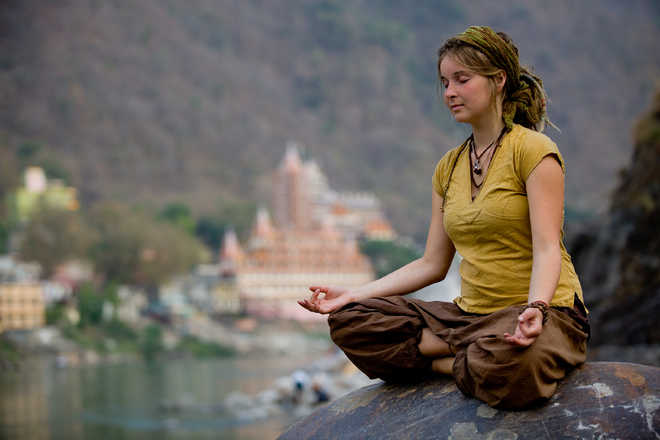Jnana mudra the esoteric gesture of wisdom
Dr Satish K Kapoor
A mudra is a symbolic gesture with hands, fingers or other parts of the body in a prescribed way. While some mudra-s are common and transparent as in yoga, dance, drama, iconography and other forms of art, others are mystifying. Mudra-s are used to balance the five primal elements or employed in the spiritual practices of non-semitic religions, like Hinduism and Buddhism to invoke god, or to understand the Ultimate reality.
But a mudra is not just the movement of hands or fingers; it involves the mind and the breath, and is an exercise in self control. Each mudra serves as a code or a signal to conceal, describe or convey a message, an idea or a thought-pattern, relating to the world of phenomena or the cosmic regions beyond ordinary perception. Unlike tamasic mudra-s, that manifest inertia or refer to male and female symbolism, mating, ritual dance etc, sattvic mudra-s, characterized by purity, empower the inner self and help in spiritual progress, as in case of Jnana (Gyan) mudra - the gesture of knowledge that culminates in supreme awareness.
Jnana mudra can be performed in three ways: by joining the tip of index finger with (a) the tip of thumb (b) the mid-part of thumb, or (c) with the base of thumb at the mount of Venus which signifies beauty and love. Absence of the mount of Venus or its abnormal prominence in a person’s hand forebodes trouble in life caused by plain indifference or morbid sensuousness. In all these esoteric forms, a full circle, half circle or a small circle is formed that sets into motion the vital energy or life principle, governing the instinctive mind. Fingers other than the thumb and the index finger are kept in an extended position, and are tilted towards the earth.
Traditionally, Jnana mudra is practiced in siddhasana, padmasana , vajrasana or some simple posture during meditation. The head is kept erect; the neck and back are held in a straight line, and hands are put on knees, with palms opened widely. However, one can practice this mudra, while walking, travelling, sitting in a chair, or lying in bed, with single hand or with both hands separately, for as much time as one can spare. The thumb, whether large, small, supple, thin, or pointed, stands for the cosmic self, and represents the fire element. Its first joint symbolizes the will; second, the power of ratiocination and the bottom, emotion and passion.
The index finger which is associated with Jupiter, signifies consciousness at the micro-level, and denotes authority and ambition. Its bending is symbolic of the human ego surrendering to the higher self. In Tantra, the index finger is regarded as masculine, and the mount of Venus, feminine. The coalescence of opposites triggers energy that empowers life.
Touching is a language that the human body grasps naturally and responds to, without effort. The index finger, like other fingers, is a potential storehouse of energy that is particularly active at the tips, whether square, spatulate, conic or pointed. Since no external touch is required in the practice of Jnana mudra, the flow of prana or vital energy, remains concentrated within, resulting in the purification of the mind, intellect and the senses. The touch of index finger to the upper part of thumb purges the mind of agony; to the middle part, controls its waywardness, and to the bottom, relieves it of unwanted desires.
Jnana mudra suits persons of all ages and temperaments. Its regular practice reinforces one’s determination to overcome impediments in the path of spirituality. Combined with pranava sadhana or meditation on Aum, it is believed to relax the psycho-neuro-muscular system, increase memory, sharpen intellect, cure insomnia, and give moral strength to cope with stress.
(Dr Satish K Kapoor is a noted educationist and scholar of Hinduism based in Jalandhar city)









